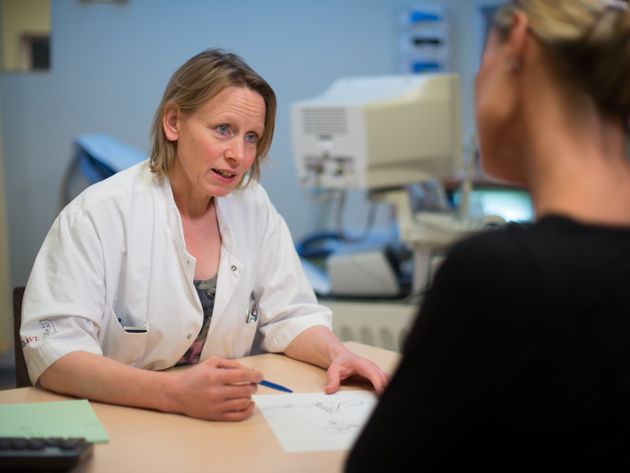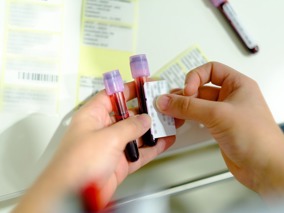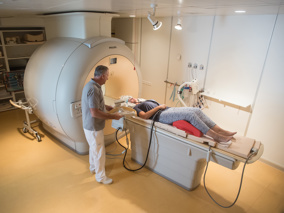Cervical cancer
Cervical cancer is a type of cancer in the cervix. The cervix is the lower, narrow part of the uterus. It is the opening to the vagina. Cervical cancer mainly occurs in women over the age of 30.
Read more about the symptoms, examinations and treatments for cervical cancer on this page.
Learn more about cervical cancer
Causes of cervical cancer
Cervical cancer is caused by the Human Papillomavirus (HPV). You can become infected with HPV through sexual contact. It does not matter whether this is safe (with protection) or unsafe (without protection). You can also become infected through hands or fingers. Even if you only have one sexual partner.
Usually the body clears the virus itself within two years. Sometimes that doesn't happen. Then restless cells can develop. If these cells are not detected and treated in time, they can grow into cervical cancer. Not every woman with HPV gets cancer. Smoking increases the risk of cancer.
Since 2009, the HPV vaccination has been part of the National Immunisation Programme. Around the age of ten, boys and girls are invited to get the shot. This shot prevents 9 out of 10 cases of cervical cancer and also reduces the risk of other cancers caused by HPV. The risk of cancer is therefore much smaller.
You can still get cervical cancer even after vaccination. It is therefore important to participate in the population screening. The population screening tests whether you have HPV by having a Pap smear or doing a self-test.
Symptoms of cervical cancer
The symptoms of cervical cancer can vary. These are possible complaints:
- Irregular bleeding, even if you are not menstruating
- Blood loss after menopause (the last menstrual period). Think of bleeding while you have not been menstruating or in menopause for a long time
- Blood loss during or after sex
- Abnormal discharge (such as an unusual smell or color) and a lot of pain
Types of cervical cancer
In 8 out of 10 women with cervical cancer, the tumor is on the outside of the cervix. This type of cancer is called squamous cell carcinoma. In 2 out of 10 women with cervical cancer, the tumor is located on the inside of the cervix. This type of cancer is called adenocarcinoma.
Very occasionally the cancer is in other cells. Then it is not because of HPV.
Waiting
We want to inform you as well as possible about the waiting time per condition. We do this based on a prognosis of the current waiting list. The waiting time can vary from patient to patient for various reasons. Your attending physician will give you more information during your outpatient consultation.
-
7 days
First appointment
This is approximately how long it will take until you have your first appointment
-
6 days
Rapid diagnostics
This is approximately how long it will take before you can start rapid diagnostics at the NKI
-
8 days
Second opinion
This is approximately how long it will take before you come in for a second opinion at the NKI
Other relevant websites

 nl
nl






